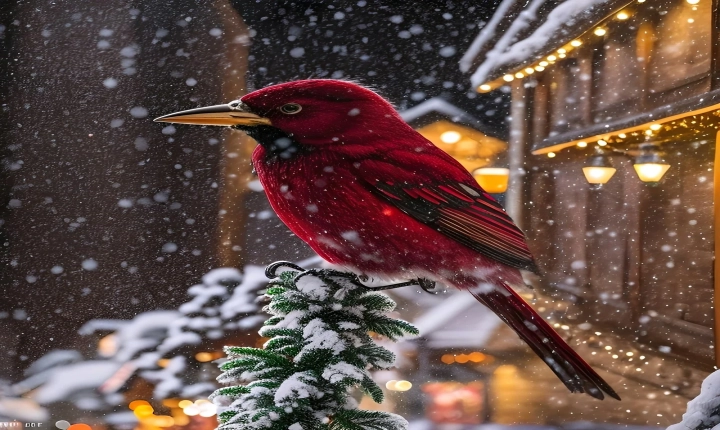Title: How to Create AI-Generated Art – Exploring the Intersection of Technology and Creativity
Art has always been a form of human expression, serving as a medium for individuals to communicate their emotions, thoughts, and ideas. With the advancement of technology, the boundaries of artistic creation have expanded, and one of the most intriguing developments is the emergence of AI-generated art. The fusion of artificial intelligence and creativity has opened up new possibilities for artists and enthusiasts alike, offering a unique avenue for self-expression and experimentation.
Creating AI-generated art involves harnessing the power of machine learning algorithms, neural networks, and advanced computational processes to generate visual art, music, poetry, and more. While some may view AI-generated art as a challenge to human creativity, others see it as a complementary tool that can inspire new artistic endeavors. In this article, we will explore how to create AI-generated art and the potential impact of this emerging form of artistic expression.
Understanding the Role of AI in Artistic Creation
Before delving into the process of creating AI-generated art, it is essential to grasp the role of AI in artistic creation. Artificial intelligence is capable of analyzing vast amounts of data, identifying patterns, and generating novel outputs based on the information it processes. In the context of art, AI can be programmed to learn from existing artistic styles, techniques, and compositions, and then produce original works that reflect these influences.
The Process of Creating AI-Generated Art
The process of creating AI-generated art can differ based on the specific medium, whether it be visual art, music, or literature. However, there are general steps that are typically involved in the creation of AI-generated art:
1. Data Collection: The first step in creating AI-generated art involves collecting a diverse range of data, such as images, musical compositions, or written texts. This data serves as the foundation for training the AI model to generate new, original content.
2. Training the AI Model: Once the data is collected, it is used to train the AI model through a process known as machine learning. During this training phase, the AI model learns the patterns, styles, and characteristics of the input data, enabling it to generate new content that aligns with the learned characteristics.
3. Generation of Art: After the AI model has been trained, it can begin generating new art based on the patterns and styles it has learned. This can involve creating visual images, composing music, or even writing poetry, depending on the nature of the AI model and the input data.
4. Iterative Refinement: Creating AI-generated art often involves an iterative process of refinement, whereby the output of the AI model is evaluated and adjusted to achieve the desired artistic results. This may involve tweaking the parameters of the AI model, post-processing the generated content, or incorporating human feedback to enhance the artistic quality of the output.
The Impact and Implications of AI-Generated Art
The rise of AI-generated art has sparked widespread discussion and debate regarding its implications for the art world. Some proponents of AI-generated art view it as a means of democratizing artistic creation, allowing a wider range of individuals to engage in the creative process and explore new artistic possibilities. It also presents an opportunity for artists to collaborate with AI systems, blending human creativity with machine-generated content to produce innovative works of art.
However, the emergence of AI-generated art has also raised questions about the nature of creativity and artistic authorship. Critics argue that AI-generated art lacks the emotional depth and intentionality that are intrinsic to human artistic expression, leading to concerns about the devaluation of traditional artistic practices. Additionally, there are ethical considerations surrounding the ownership and attribution of AI-generated art, as well as potential implications for the art market and intellectual property rights.
Moving Forward: Embracing the Intersection of Technology and Creativity
As AI continues to advance and evolve, the realm of AI-generated art is expected to expand, offering new opportunities for artistic exploration and innovation. While it is essential to acknowledge the complexities and challenges associated with AI-generated art, it is also important to embrace the potential for collaboration between human artists and AI systems, seeking to leverage the strengths of both to push the boundaries of artistic expression.
For those interested in exploring AI-generated art, there are numerous tools and platforms available that enable individuals to experiment with creating their own AI-generated works. These resources provide an accessible entry point for artists, technologists, and enthusiasts to engage with AI as a creative tool and to discover the unique possibilities it offers for artistic expression.
In conclusion, the integration of AI and art represents a compelling intersection of technology and creativity, paving the way for new forms of artistic expression and pushing the boundaries of what is possible in the realm of art. While AI-generated art presents its own set of challenges and considerations, it also holds tremendous potential to inspire, innovate, and expand the horizons of artistic creation. By embracing the fusion of AI and art, we have the opportunity to embark on a journey of exploration and discovery that has the potential to reshape the future of artistic expression.
